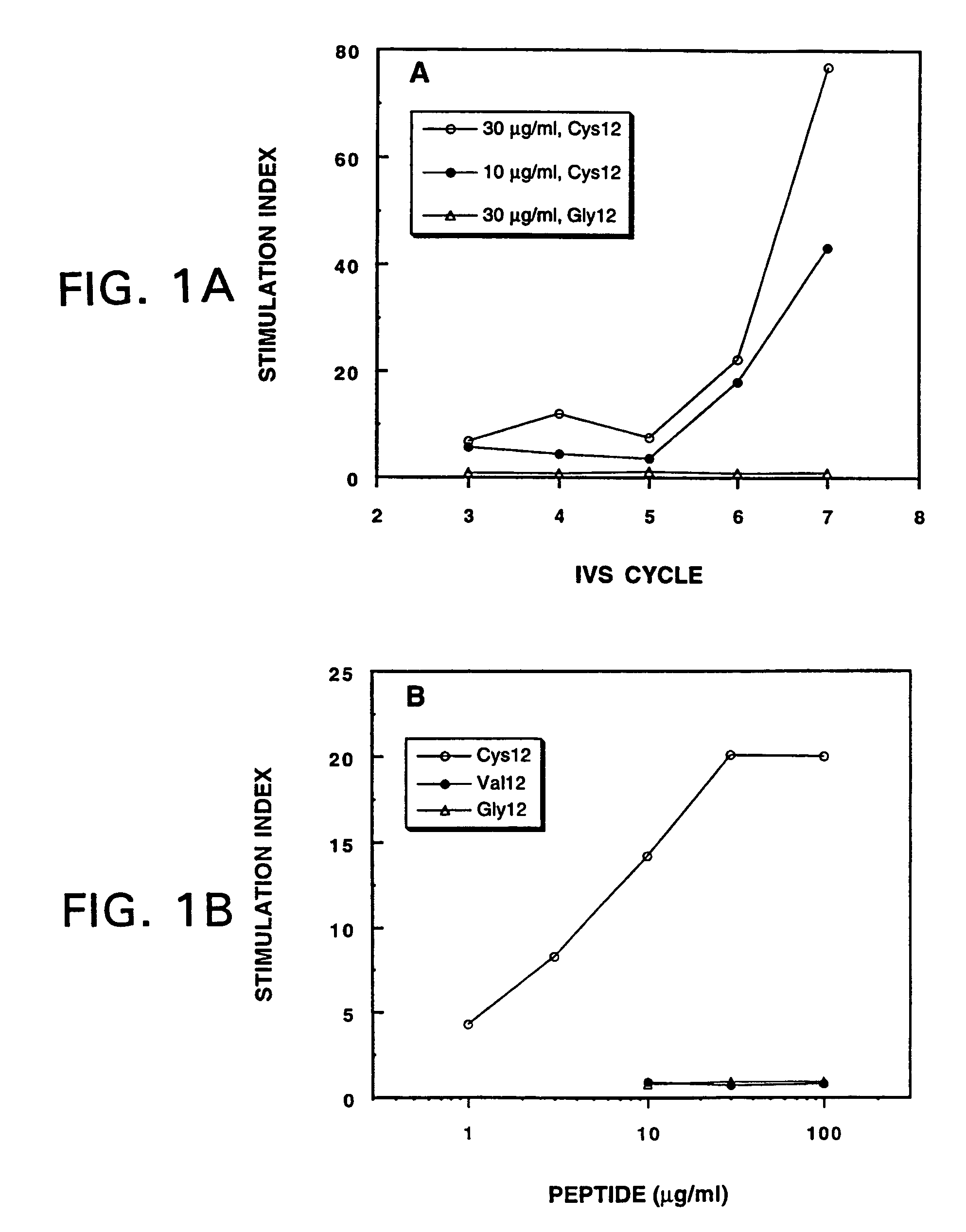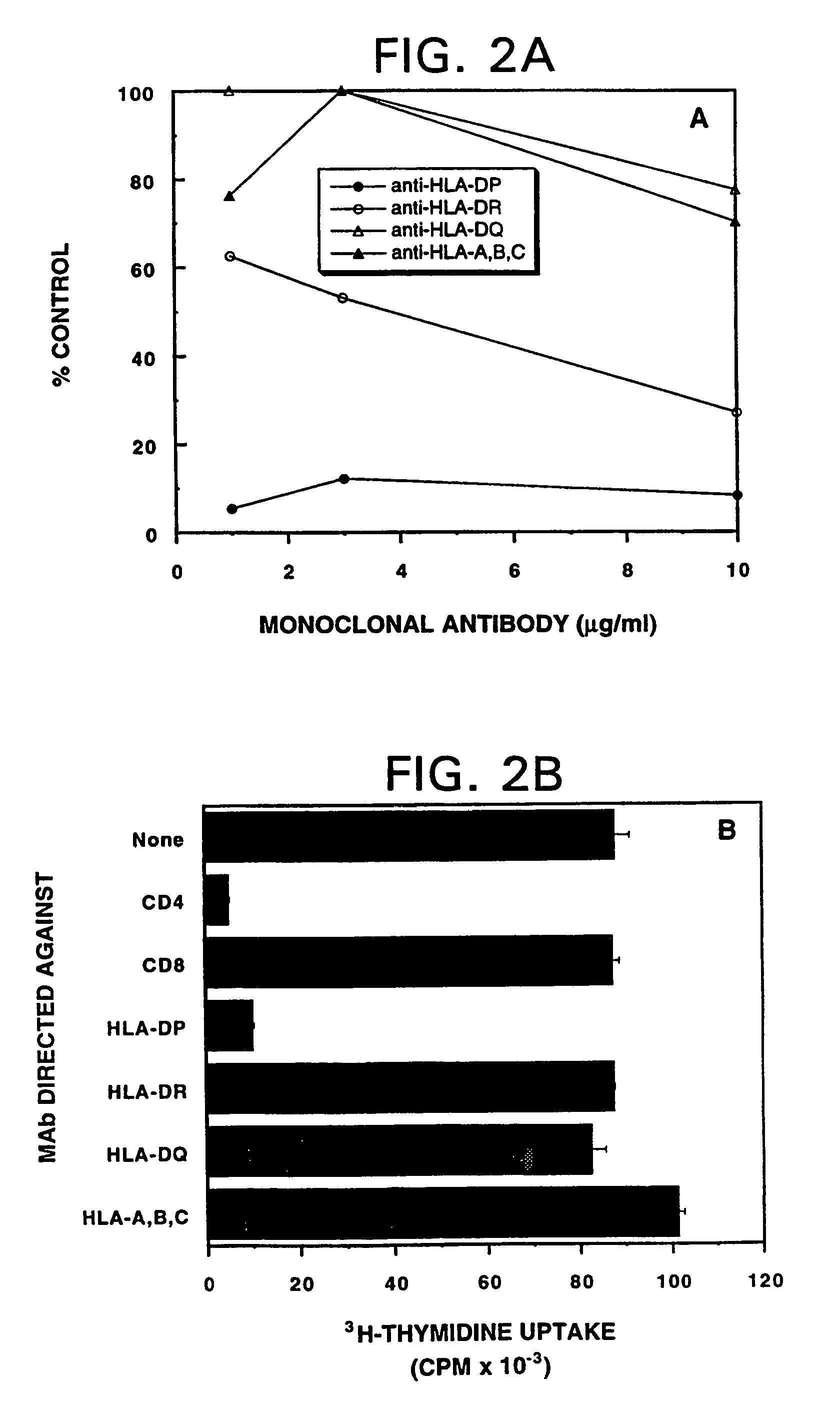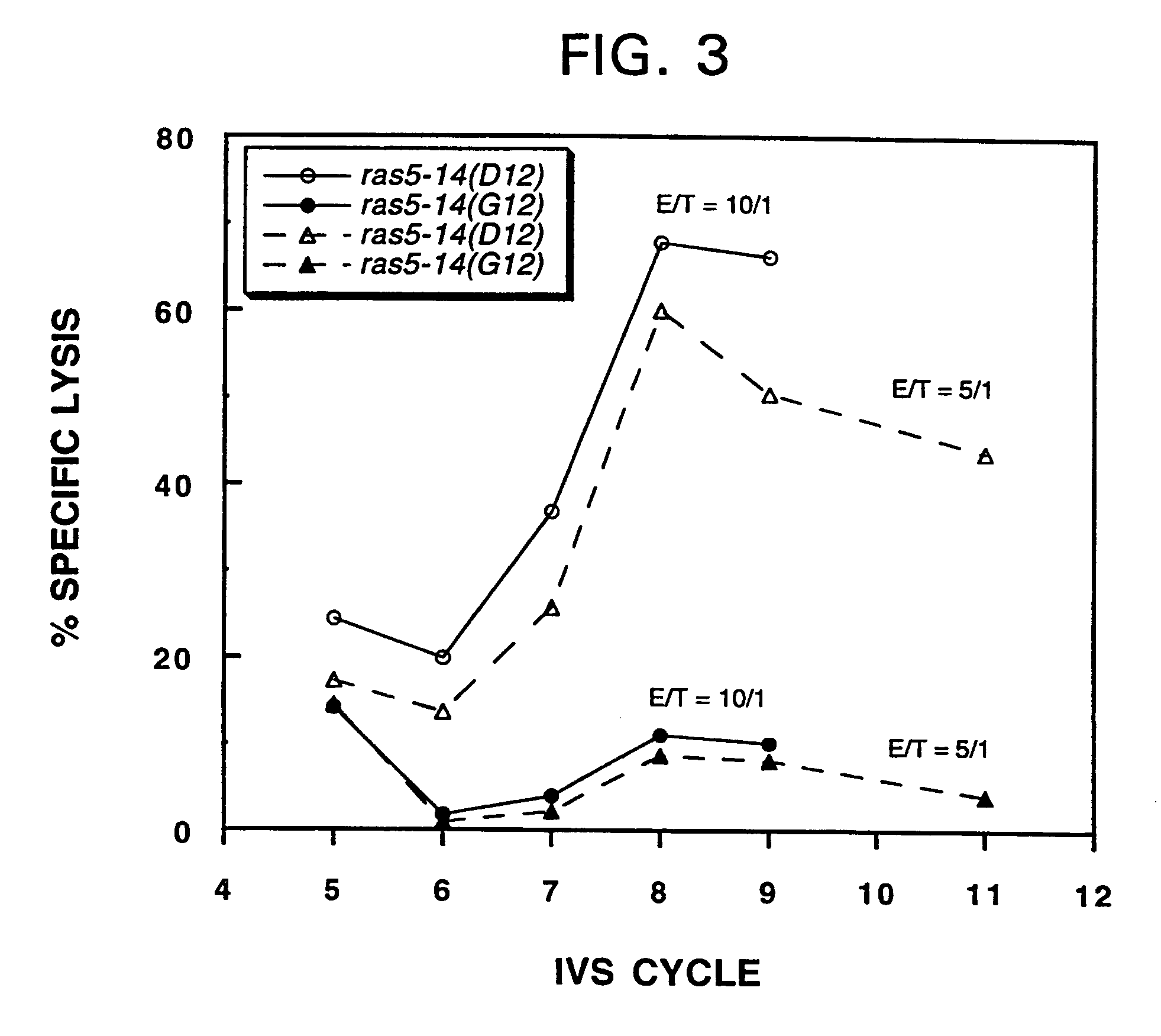Mutated ras peptides for generation of CD8+Cytotoxic T lymphocytes
a cytotoxic t lymphocyte and ras technology, applied in the field of ras peptide mutation, can solve the problems of lysis of cells expressing such peptides, and achieve the effect of enhancing ctl activity and enhancing effector function
- Summary
- Abstract
- Description
- Claims
- Application Information
AI Technical Summary
Benefits of technology
Problems solved by technology
Method used
Image
Examples
example 1
Materials and Methods
[0091]Patient selection. Adult cancer patients with histologically confirmed diagnosis of adenocarcinoma of the colon, gastrointestinal tract, lung or pancreas with metastatic disease, were screened as potential candidates for this phase I clinical study. Tumor samples from these patients were examined for point mutations in the K-ras gene at codon 12 by polymerase chain reaction (PCR) of paraffin-embedded sections by methods known in the art. In addition to fulfilling all other essential inclusion criteria as specified in the FDA-approved NCI clinical protocol, those patients presenting the appropriate K-ras mutation were then selected for study entry.
[0092]Peptides and immunizations. Mutant ras 13-mer peptides used as immunogens were synthesized as clinical grade reagents under GMP conditions (Bachem, Torrance, Calif.: >97% purity by HPLC). Control and additional experimental peptides, which were used in vitro, either were prepared commercially (Bachem) or syn...
example 2
Vaccination of Cancer Patients with Mutant Ras Peptides and Production of Anti-Mutant ras-Specific, MHC Class II-Restricted CD4+ T-Cell Lines
[0106]A peptide-based, phase I clinical trial was initiated in metastatic carcinoma patients whose tumors harbor point mutations in the ras p21 proto-oncogenes at codon 12. Selected patients were vaccinated with a mutated ras 13-mer peptide spanning positions 5-17, which corresponded to the specific point mutation at codon 12 found in their cancer. After completion of two of the four cohorts (three patients / cohort), two patients demonstrated peptide-specific cellular immune responses resulting from the vaccination.
Patient 43: Mutant ras5-17(Cys12) Peptide
[0107]Patient 43 received three complete vaccination cycles of mutant ras5-17(Cys12) peptide, 0.5 mg / vaccination (i.e., cohort II), given in Detox™ adjuvant. Lymphocytes were propagated in vitro by IVS (see Example 1) from post-third vaccinated lymphocytes of RAS patient 43. Antigen-specific, m...
example 3
Ability of the Peptide-Derived CD4+ T-Cell Line of Patient 43 to Recognize the Appropriate Mutant Ras Protein
[0112]An important immunologic objective was to determine whether the ras peptide-induced T cell lines could also recognize a processed form of the corresponding mutant ras protein, which may be expressed and presented by either the tumor or the APC population. A model system was developed to examine the capacity of the anti-ras5-17(Cys12) peptide-specific CD4+ T cell line of patient 43 to recognize the mutant ras Cys12 protein processed and presented by an autologous APC population (i.e., EBV-B cells) (Table 4). Since a purified or recombinant source of mutant rasCys12 protein was unavailable, the protein was isolated by extraction (with non-ionic detergent) from a human tumor cell, the Calu-1 lung carcinoma, which harbors that particular codon 12 mutation. The HT-29 and SW480 colon carcinoma cell lines, harboring either no known codon 12 mutation or a Val12 mutation, respec...
PUM
| Property | Measurement | Unit |
|---|---|---|
| concentrations | aaaaa | aaaaa |
| pH | aaaaa | aaaaa |
| volume | aaaaa | aaaaa |
Abstract
Description
Claims
Application Information
 Login to View More
Login to View More - R&D
- Intellectual Property
- Life Sciences
- Materials
- Tech Scout
- Unparalleled Data Quality
- Higher Quality Content
- 60% Fewer Hallucinations
Browse by: Latest US Patents, China's latest patents, Technical Efficacy Thesaurus, Application Domain, Technology Topic, Popular Technical Reports.
© 2025 PatSnap. All rights reserved.Legal|Privacy policy|Modern Slavery Act Transparency Statement|Sitemap|About US| Contact US: help@patsnap.com



